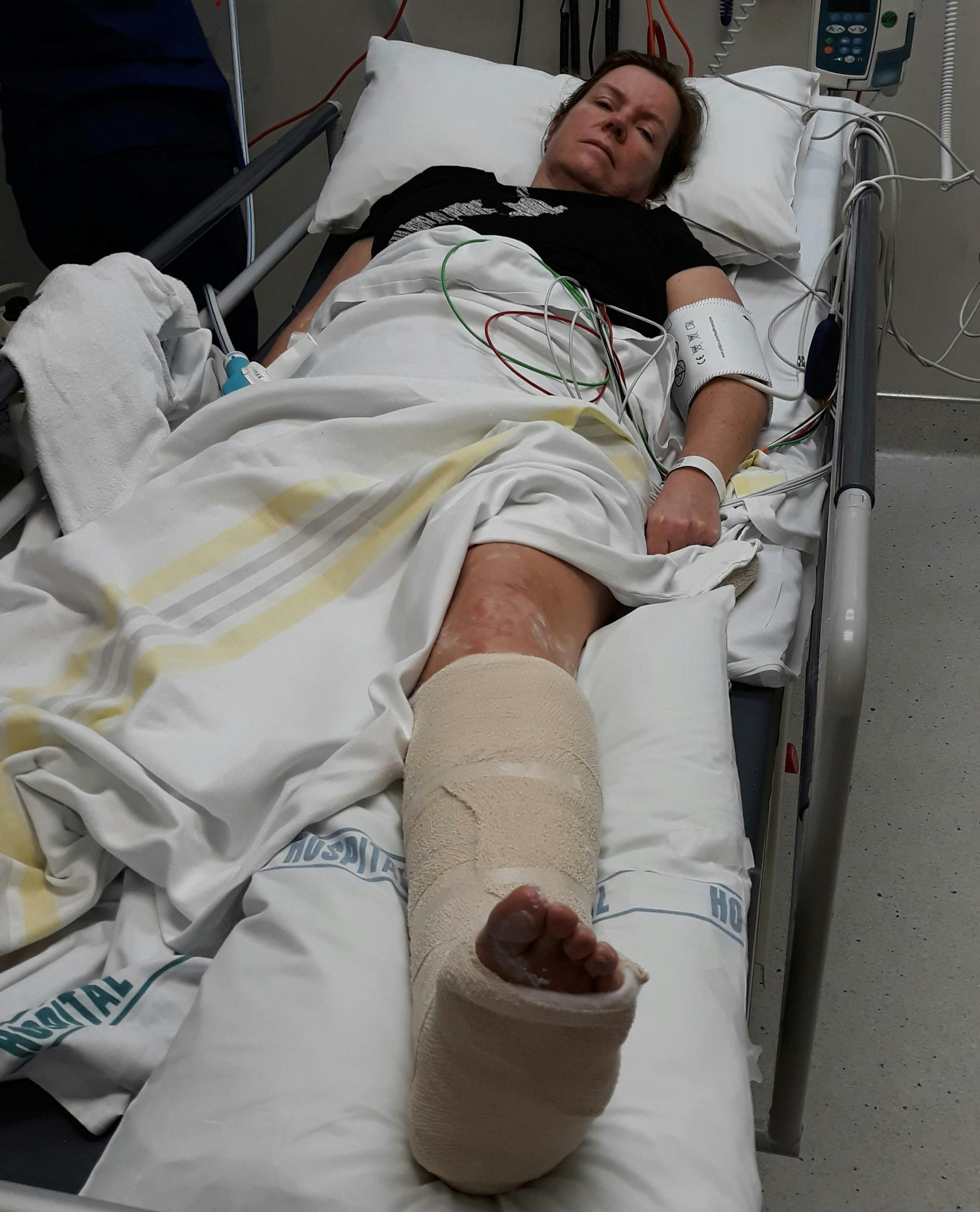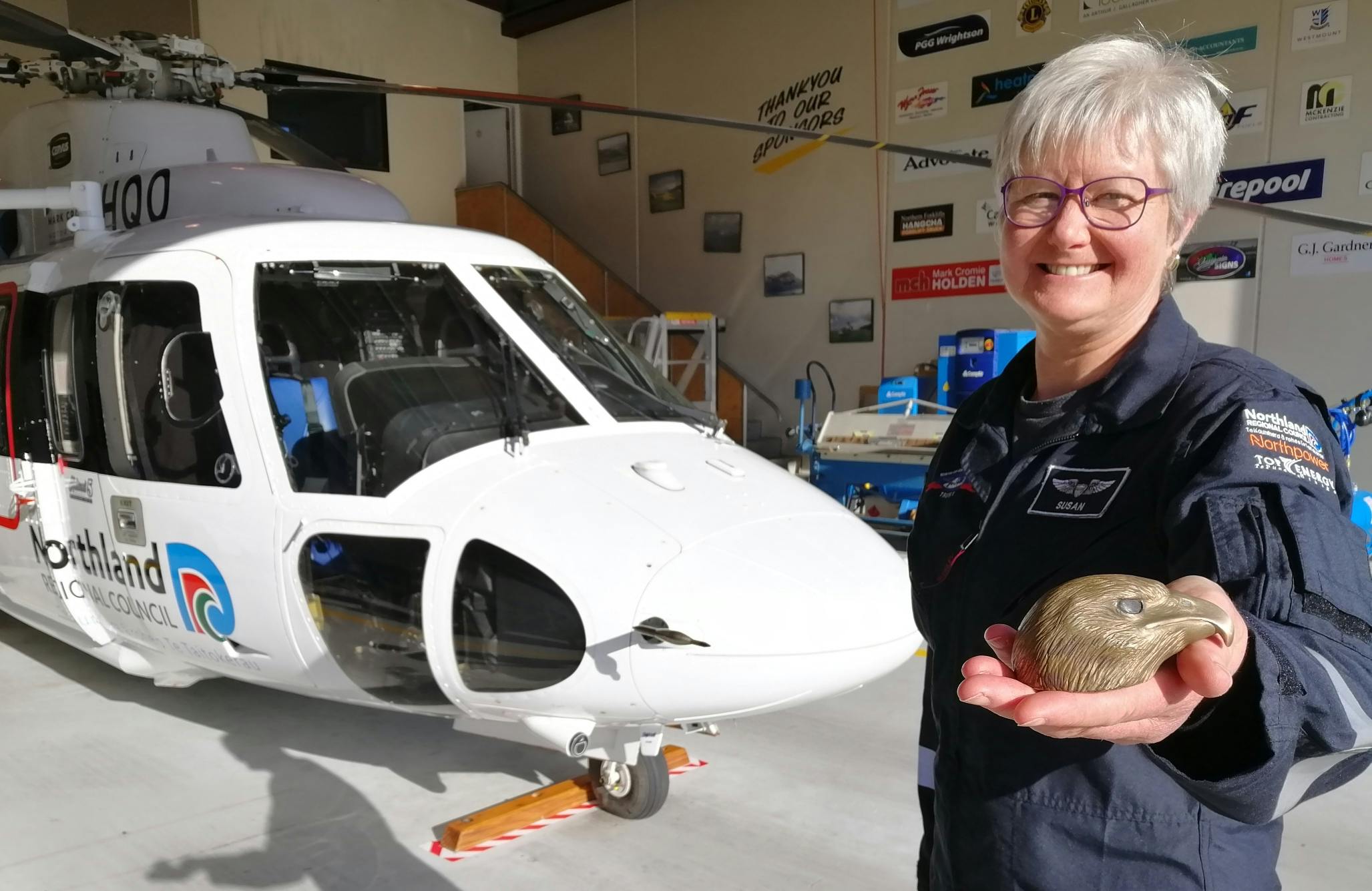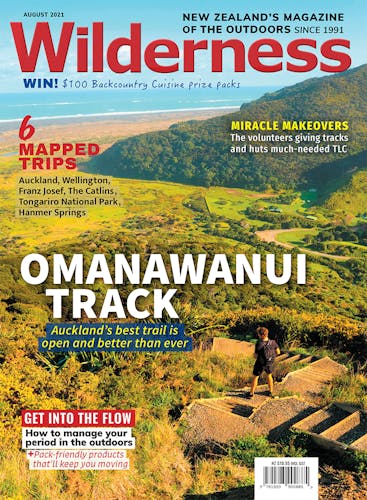The exclusive Haast Club is open only to those who have been rescued by helicopter. Wilderness speaks to two Kiwis who found themselves eligible to join the club, as well as the charity’s founder, Susan Dinkelacker.
Ericka O’Shea’s eligibility came through the day she broke her ankle.
As a volunteer for the Bream Head Conservation Trust, she and her husband were staking out trap lines in the claustrophobic foliage of Te Whara Track near Whangarei, when she heard a jarring crack.
“I was walking on a benign part of the track, and I put my foot on some tree roots with leaves over them. My right foot slipped, and I buckled down over my left foot,” O’Shea says.
The sound was like a snapping twig, but the shock travelled through her body.
“At first I kept my composure and went through what I thought could be wrong,” she says. “I ruled out a sprain, because I could feel the bones cracking.”
With “intermittent black spots” in the mobile coverage, O’Shea’s husband hunted out a patch of reception to report the situation to the ranger in charge, who rushed to the site with several experienced trampers to assess the feasibility of a ground rescue.
“Once they determined it was too complicated to get me out, the ranger used his GPS device to directly call Northland Rescue Helicopters to give them our coordinates,” O’Shea says.
While awaiting the airlift, O’Shea was made as comfortable as possible.
“I’d been through worse pain, and my husband and I are ex-Airforce, so we have a lot of experience and have been trained to help in these situations,” she says.
“We went through the normal procedures, making sure we were in a safe area and keeping my foot elevated and stable.”
Before long, the chopper arrived and lowered a medic into a clearing nearby.
He tramped in from there and approved the location for a rescue. Moments later, O’Shea was on a stretcher, being winched to safety – though not for the first time in her life.
“When I was in the Airforce, I worked on a squadron with helicopters, so we were always practising for this type of event,” she says. “The logistics manager would often get us to come out of the office and be guinea pigs, so I’ve been winched several times.”
This was, however, O’Shea’s first time flying as a patient, and the relief was tangible.
“It was a great feeling to know it wasn’t going to go on and on for hours, and I would be in hospital quickly,” she says.
While recovering, O’Shea learned her experience had gained her access into one of Aotearoa’s most exclusive fraternities – the Haast Club – which she subsequently joined.
Named after Haast’s eagle, the charitable club is open only to those who have been rescued by helicopter.
Club founder, Northland Rescue helicopter pilot and sculptor Susan Dinkelacker, says the now-extinct bird of prey is the perfect emblem to represent the club.
“The Haast’s eagle is the largest ever to have lived, and rumour has it that it could even pick up a man, as it used to prey on moa,” she says.

The imagery also strikes a chord with many Kiwis for an entirely different reason; in Peter Jackson’s Lord of the Rings film trilogy, the great eagles save hobbits and wizards alike on several occasions.
“They represent being saved from the air, and they’ve got that New Zealand flavour,” Dinkelacker says.
To join the club, members must be flown by helicopter as a patient, or be rescued from dire circumstances, as in a tramper stuck above the bushline.
For Lindsay Bellamy, it was both. It was the summer of 2013 and the then 52-year-old was embarking on a solo four-day tramp over Douglas Pass in South Westland. It was just before dark on his second night when chest pains began.
“I was struggling for breath, and I couldn’t lie down or sit up. I just couldn’t get comfortable,” he says.
Bellamy wondered if he was experiencing a heart attack, but his medical history didn’t support this.
“I had just had a medical, and the doctor had told me whatever you’re doing, keep doing it, because there is nothing wrong with you,” he says.
For the next few hours, Bellamy lay in his tent trying to decide whether or not to set off his PLB, and finally, at 10.30pm, he made the call.
“I don’t know how long I’d had the beacon – maybe five years – and when you do need it, you hope the thing still works,” he says.
Hopeful that help was on the way, Bellamy fell asleep.
Four hours later, he was brought around by the sound of his saviours – a rescue chopper from Te Anau descending into the clearing to land by his tent.
At Queenstown Hospital, where Bellamy spent two days on an antibiotic drip, he learned he had contracted pneumonia before setting out on his trip.
“The virus can sit in your body for days, waiting for you to get run down, and then it gets you,” Bellamy says. “I never realised how quickly it can kill you, so the rescue really saved my ass.”
What would have happened otherwise is the “$64 million question”, Bellamy says, but the experience has cemented his commitment to carry a PLB on every tramp.
“The amount of guys I meet in the hills who don’t carry one… they’re idiots,” Bellamy says.
“Get a beacon. When the s**t hits the fan, you want out of there.”
Bellamy read about the Haast Club in the newspaper and was quick to lend his support.
Membership lasts a lifetime and can be purchased for the one-off price of a Haast Club collectible sculpture, designed by Dinkelacker. Collectable pins, pendants and ornaments are available, and half of the proceeds are donated to the NZ Rescue Helicopter Trust of the member’s choice.
“It’s a nice way to give back, and a lot of people will choose to donate to a particular service,” Dinkelacker says.
Membership also offers a silver lining for what is often a traumatic experience, as well as a conversation catalyst for people to share their experiences.
“When people have injuries or stressful experiences, they try to look for some bright side to where they find themselves,” she says.
“It can be a very difficult time for people, going through [a rescue], and that’s why it has such an impact, when they get past it.”








